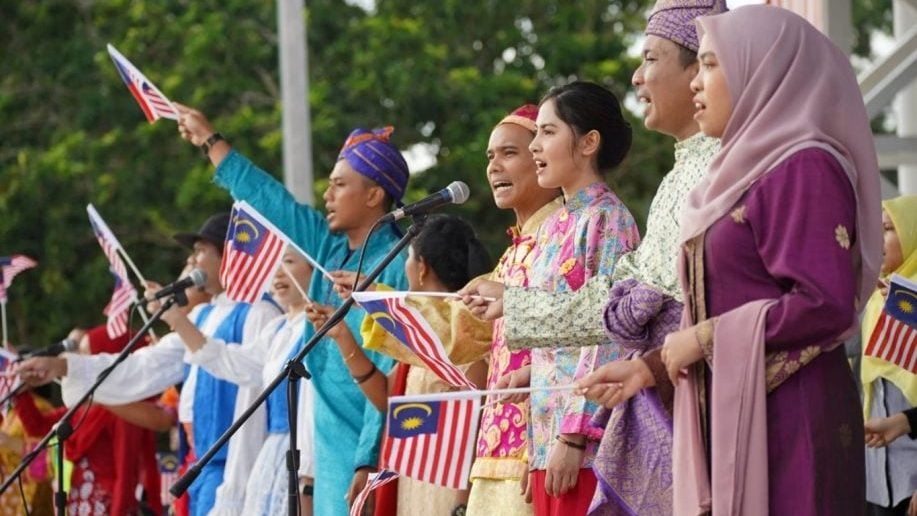
I remember when I was a child taking art classes, our teacher would always ask us to draw the national flag during the National Day month. Back then, the children might not have accurately sketched the actual design of the Jalur Gemilang, but with great enthusiasm, we poured our patriotic feelings onto the blank paper, each expressing creativity in our own way. In that moment, the children’s sense of patriotism was quietly awakened. They were bold and full of love for the country. No one would scold them for drawing a flag missing a stripe or a corner. Their creativity came purely from their heart not from rigid pressure imposed by adults. Later, the late patriotic singer Sudirman Arshad, during the closing ceremony of the 15th SEA Games in 1989 at the National Stadium, entered the venue wearing an outfit made of the national flag, shouted “Merdeka” three times and sang “To Know Malaysia is to Love Malaysia”, uniting the patriotism of both the audience in stadium and television viewers. No one accused him of “desecrating” or offending the beloved Jalur Gemilang. That was the golden era of Malaysia, when people wrote patriotic songs one after another. At the time, love for the country stemmed from heartfelt recognition, not fear of punishment. In the name of patriotism, we established guidelines for the use of the Jalur Gemilang. While the intention was to guide citizens to respect the national flag, the unintended effect was planting a sense of fear around its use, gradually suppressing people’s natural creativity and enthusiasm. People now fear that a small mistake in displaying or designing the national flag might lead to irreversible public outrage and punishment. The desire to show patriotism might instead become the spark for disaster. I believe that patriots would never maliciously insult, burn, desecrate or provocatively display the national flag. But for honest mistakes, we should respond with understanding and compassion, offering the offenders opportunities to learn and rectify—not treating them as treason. Recently, Malay tabloid Sinar Harian sparked a controversy when it re-used an old design template while creating an infographic for the new Inspector-General of Police, Datuk Seri Mohd Khalid Ismail, and failed to remove outdated information. In the past, media that made such errors would promptly clarify and correct them; if the mistake was severe, they would issue a public apology. The matter would usually settle soon after. Today, however, the norm is immediate police reports, intense public backlash and investigations that may lead to senior editors being suspended or dismissed. This toxic culture has left media workers living in deep fear and severely undermines the development of press freedom. Ensuring accuracy and quality contents are the professional duties of journalists. But we are all human—mistakes can happen. Society should give media space to correct, improve, and raise their standards. Chief editors and senior editorial teams work under tremendous pressure. Every day, they must complete editing and decide within tight deadlines, bearing full responsibility for headlines, texts and images. […]
5月前
更多fear